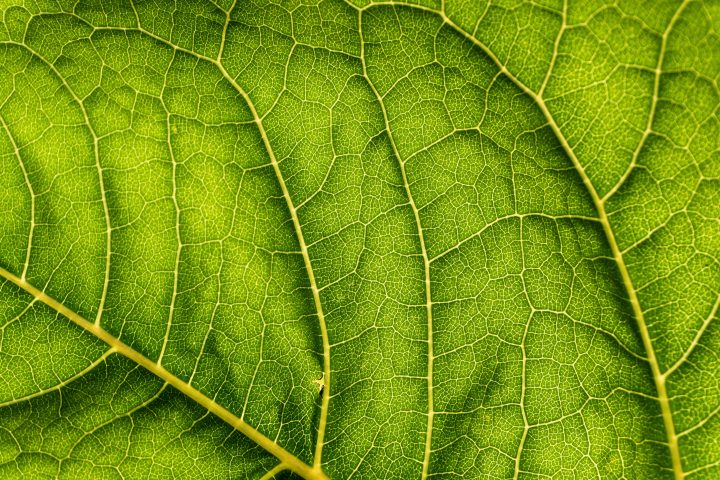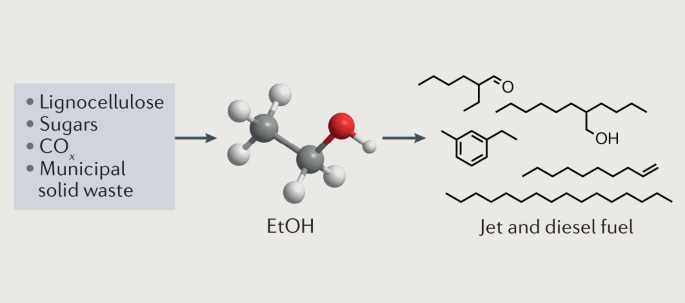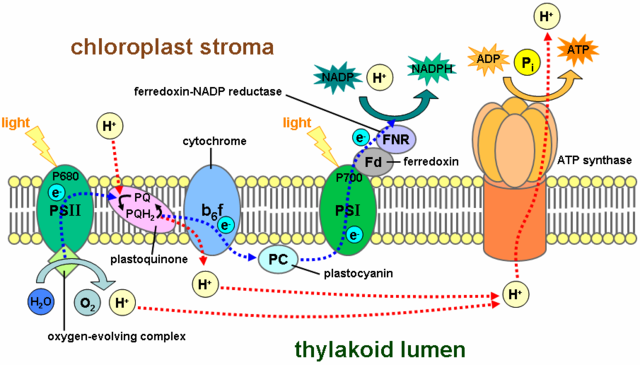17+ green plants convert sunlight into chemical energy in the
It is a form of photoelectric cell defined as a device whose electrical characteristics such as current voltage or resistance vary when exposed to light. ˈ l ɪ tʃ ən LITCH-ən is a composite organism that arises from algae or cyanobacteria living among filaments of multiple fungi species in a mutualistic relationship.

How Does A Plant Convert Light Energy To Chemical Energy Sciencing
This classification may date from Aristotle 384 BC 322 BC who made the distinction between plants which generally do not move and animals which often are mobile to catch their food.

. To grow plants indoors a growing medium eg. An ecosystem or ecological system consists of all the organisms and the physical environment with which they interact. Currently hydrogen is used mostly by industry during oil-refining and synthetic nitrogen fertilizer production and little is used for energy because it is expensive relative to fossil fuels.
An ebook short for electronic book also known as an e-book or eBook is a book publication made available in digital form consisting of text images or both readable on the flat-panel display of computers or other electronic devices. Sunlight is the primary input of energy into the planets ecosystems. Plants and phytoplankton are the main components of the fast carbon cycle.
Tidal power or tidal energy is harnessed by converting energy from tides into useful forms of power mainly electricity using various methods. Aye-ayes use their long skinny middle fingers to pick their noses and eat the mucus. The possible existence of unseen microbial life was suspected from ancient times such as in Jain scriptures from sixth century BC India.
The Physical Science BasisContribution of Working Group I to the Fourth Assessment Report of the Intergovernmental Panel on Climate Change. Carbon dioxide is naturally present in the atmosphere as part of the Earths carbon cycle the natural circulation of carbon among the atmosphere oceans soil plants and. All living things were traditionally placed into one of two groups plants and animals.
Preparing for the next pandemic and what the future holds for science in China. Kinetic energy is determined by the movement of an object or the composite motion of the components of an object and potential energy reflects the potential of an object to have motion and generally is a function of the. Detergents and chemical products commonly used in many places of the world continue to pour into our rivers lakes and seas.
Hydrogen is widely viewed as an important fuel for a future energy transition. A lichen ˈ l aɪ k ən LY-kən also UK. The ATP and NADPH.
Photosynthesis is also used by algae to convert solar energy into chemical energy. Individual solar cell devices are often the. Much later when Linnaeus 17071778 created the basis of the modern system of scientific.
Soil or growing substrate water nutrients light and air need to be supplied to the plant with the exception of aeroponic cultivation in which case a growing medium is not required. Although most renewable energy sources are sustainable some are notFor example some biomass sources are considered unsustainable at current rates of. The total energy of a system can be subdivided and classified into potential energy kinetic energy or combinations of the two in various ways.
Solar energy is radiant light and heat from the Sun that is harnessed using a range of technologies such as solar power to generate electricity solar thermal energy including solar water heating and solar architecture. All emission estimates from the Inventory of US. Energy enters the system through photosynthesis and is incorporated into plant tissue.
Using energy from the Sun both plants and plankton combine carbon dioxide CO 2 and water to form sugar CH 2 O and oxygen. A solar cell or photovoltaic cell is an electronic device that converts the energy of light directly into electricity by the photovoltaic effect which is a physical and chemical phenomenon. All green plants and a few other autotrophic organisms utilize photosynthesis to synthesize nutrients by using carbon dioxide water and sunlight.
Carbon capture and storage CCS or carbon capture and sequestration is the process of capturing carbon dioxide CO 2 before it enters the atmosphere transporting it and storing it carbon sequestration for centuries or millenniaUsually the CO 2 is captured from large point sources such as a chemical plant or biomass power plant and then stored in an underground. Even as the quality of available water is constantly diminishing in some places there is a growing tendency despite its scarcity to privatize this resource turning it into a commodity subject to the laws of the. Concentrated solar power systems use lenses or mirrors and solar tracking systems to focus a large area of sunlight to a.
Dolly Parton Respectfully Bows Out of Rock Hall Nomination I wish all of the nominees good luck and thank you again for the compliment the country icon writes on Twitter. Solar power is the conversion of energy from sunlight into electricity either directly using photovoltaics PV indirectly using concentrated solar power or a combination. The empty string is the special case where the sequence has length zero so there are no symbols in the string.
By feeding on plants and on one another animals play an. Larger image to save or print References. Greenhouse Gas Emissions and Sinks.
Renewable energy is energy that is collected from renewable resources that are naturally replenished on a human timescaleIt includes sources such as sunlight wind the movement of water and geothermal heat. In wider definitions the taller palms tree ferns bananas and bamboos are also trees. Although not yet widely used tidal energy has the potential for future electricity generationTides are more predictable than the wind and the sunAmong sources of renewable energy tidal energy has traditionally suffered from relatively.
Light is composed of electromagnetic energy of different wavelengths. 458 These biotic and abiotic components are linked together through nutrient cycles and energy flows. Although sometimes defined as an electronic version of a printed book some e-books exist without a printed equivalent.
A chloroplast ˈ k l ɔːr ə ˌ p l æ s t-p l ɑː s t is a type of membrane-bound organelle known as a plastid that conducts photosynthesis mostly in plant and algal cellsThe photosynthetic pigment chlorophyll captures the energy from sunlight converts it and stores it in the energy-storage molecules ATP and NADPH while freeing oxygen from water in the cells. Phytoplankton microscopic organisms in the ocean and plants take carbon dioxide from the atmosphere by absorbing it into their cells. A microorganism or microbe is an organism of microscopic size which may exist in its single-celled form or as a colony of cells.
It is an essential source of renewable energy and its technologies are broadly characterized as either passive solar or active solar depending on. Oxygen is liberated as a by-product and light is considered as a major factor to complete the process of. In botany a tree is a perennial plant with an elongated stem or trunk usually supporting branches and leavesIn some usages the definition of a tree may be narrower including only woody plants with secondary growth plants that are usable as lumber or plants above a specified height.
Photovoltaic cells convert light into an electric current using the photovoltaic effect. Plants can also be grown indoors through the use of hydroponics. The scientific study of microorganisms began with their observation under the microscope in the 1670s by Anton van.
Carbon dioxide CO 2 is the primary greenhouse gas emitted through human activitiesIn 2020 CO 2 accounted for about 79 of all US. Lichens have properties different from those of their component organisms. Formally a string is a finite ordered sequence of characters such as letters digits or spaces.
They come in many colors sizes and forms and are sometimes plant-like but are not plants. Greenhouse gas emissions from human activities. Radiant energy from the sun generates heat provides photons of light measured as active energy in the chemical reactions of life and also acts as a catalyst for genetic mutation.
1 However hydrogen is increasingly being promoted as a way to address climate.

Photosynthesis Is An Energy Conversion Process Which Occurs In Plants Download Scientific Diagram

Pamela Draper Ceo And President Bitvo Inc Episode 32 29 November 2019 By Calgary Business Podcast

Photosynthesis Students Will Understand That Photosynthesis Is The Conversion Of Radiant Light Energy Into Chemical Energy Using Water And Carbon Dioxide Ppt Download

Essex Chronicle 2022 04 07

Photosynthesis Converts Solar Energy Into Chemical Energy Biological Strategy Asknature

Key Idea 15 Photosynthesis Transforms Light Energy To Chemical Energy Which Is Used To Form The Key Chemical Building Blocks Of Living Organisms Eoearth Org Ppt Download

Pdf Biology By Purves Amit Tiwari Academia Edu

Green Plants Convert Sunlight Into Chemical Energy In The A Golgi Bodies B Cell Brainly In

Photosynthesis Capturing And Using Solar Energy Photosynthesis What Photosynthesis Does Converts Sunlight Into Stored Chemical Energy Makes Carbon Ppt Download

Unreasonable Impact Booklet By Unreasonable Group Issuu

Mountain Xpress February 02 2011 By Mountain Xpress Issuu

Calixpyridinium Polyoxometalate Nanoparticle Assemblies For The Removal Of Organic Dyes From Wastewater Acs Applied Nano Materials

Green Plants Convert Energy Into Chemical Energy

How To Make Moonshine

Chemistries And Processes For The Conversion Of Ethanol Into Middle Distillate Fuels Nature Reviews Chemistry

Why Are Plants Green And How Did Chlorophyll Take Over The World Converting Light Energy Into Chemical Energy Biological Principles

How Does A Plant Convert Light Energy To Chemical Energy Sciencing